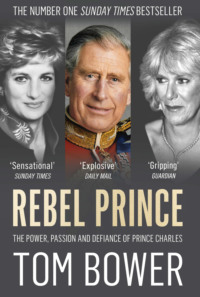Sadece Litres'te okuyun
Kitap dosya olarak indirilemez ancak uygulamamız üzerinden veya online olarak web sitemizden okunabilir.
Kitabı oku: «Rebel Prince: The Power, Passion and Defiance of Prince Charles – the explosive biography, as seen in the Daily Mail», sayfa 2
Bir şeyler ters gitti, lütfen daha sonra tekrar deneyin
Türler ve etiketler
Yaş sınırı:
0+Litres'teki yayın tarihi:
30 haziran 2019Hacim:
574 s. 41 illüstrasyonISBN:
9780008291754Telif hakkı:
HarperCollins